Art reviews: The Burrells’ Legacy | Norman Gilbert | Adrian Wiszniewski
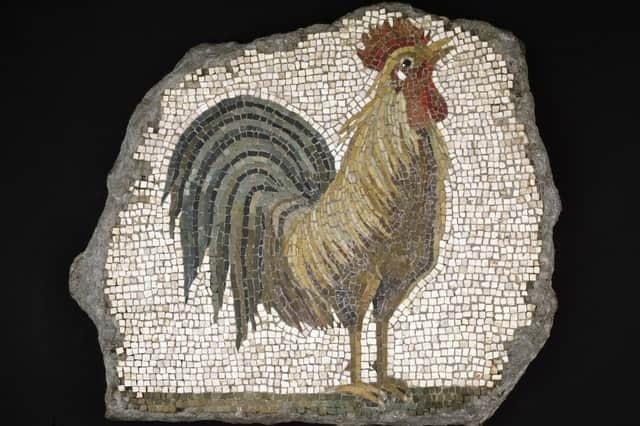

The Burrells’ Legacy: A Great Gift to Glasgow, The Burrell Collection ****
Norman Gilbert, Tramway, Glasgow ****
Adrian Wiszniewski: Rising Tides, Fire Station Creative, Dunfermline ****
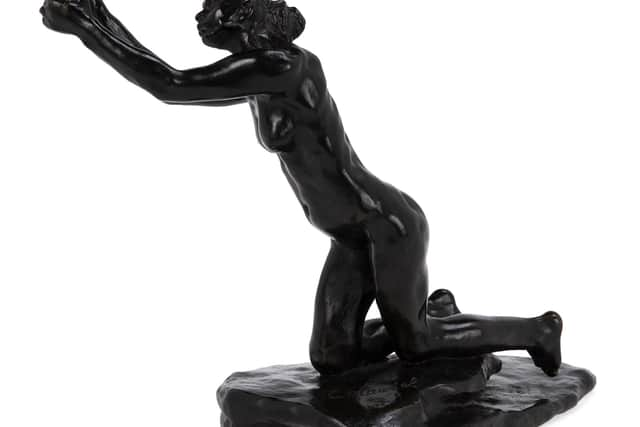

Advertisement
Hide AdWhen the refurbished Burrell Collection opened this spring, it included a new gallery for temporary exhibitions. The first show, The Burrell’s Legacy: A Great Gift to Glasgow, sets out to tell the story of the collection, as well as to show more treasures not already fitted in to the galleries upstairs.
The story begins in 1943 when Tom Honeyman, then director of Kelvingrove Museum, was summoned to a mysterious meeting with Burrell at his Hutton Castle home. There, Burrell announced an even bigger surprise: that he planned to bequeath his astonishing collection to the city of Glasgow.
Once the gift was agreed, he resumed collecting with renewed vigour, particularly acquiring objects from ancient civilisations. In 1944, there were four Egyptian artefacts in the collection; by the time Burrell died in 1958 there were 300. The show starts with groups of objects from Egypt, Mesopotamia, Greece and Rome, almost casual in their richness (stop, for a moment, and consider those stone pendants from Iraq, which might be 6,000 years old).
Other groups of objects tell other parts of the story: stained glass bought from the collection of William Randolph Hearst, a rival collector, who fell upon hard times in 1937; a tapestry which reached the market via a Nazi sale of Jewish assets (Glasgow made a payment to the family’s heirs in 2015 in order to keep the work). There’s a carpet which once belonged to Empress Maria Theresa, and King Charles II’s nightcap and slippers.
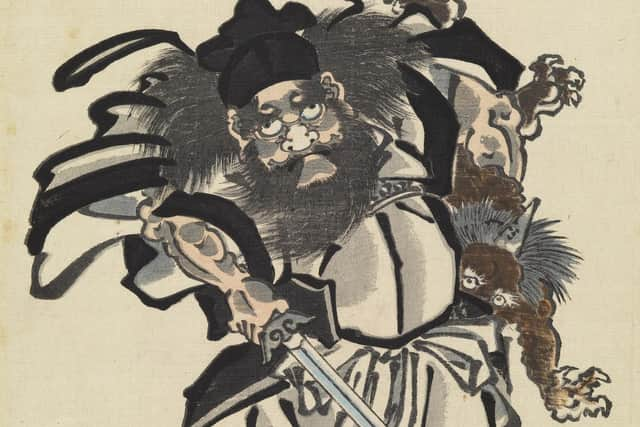

A group of 19th century French paintings – Daumier, Boudin and Fantin-Latour – include (for the first time) loans from Berwick-upon-Tweed, which also received a Burrell gift. Honeyman, we learn, argued with Burrell to keep Daubigny’s beautiful seascape The Beach at Villerville in Glasgow, but was overruled. There are also new works bought recently by the Burrell Trustees, including L’Implorante, an evocative sculpture by Camille Claudel, Rodin’s collaborator and erstwhile lover, the first sculpture by a woman to enter the collection.
Then, in a change of tack, the show exhibits several of the entries from the architectural competition launched in 1970 to find the design for the building. These are great value: an idea for a building in the shape of three linked cows; a towering concrete edifice which would pass for a power station or a grain silo; a proposal to house the collection underground, beneath a complex of five space-age glass domes.
Advertisement
Hide AdThe lighting is frustrating; too often one is either blinking against glare or standing in one’s own shadow. But this show is a microcosm of the collection upstairs: generous, ridiculously ambitious, occasionally haphazard, but full of treasure.
Meanwhile, Tramway is celebrating a different kind of legacy. Norman Gilbert painted for most of his life a stone’s throw away from here in his Shields Road flat. In the years before his death in 2019 at the age of 92, the art world rediscovered him, and now his family are custodians of the hundreds of paintings and drawings he left behind.
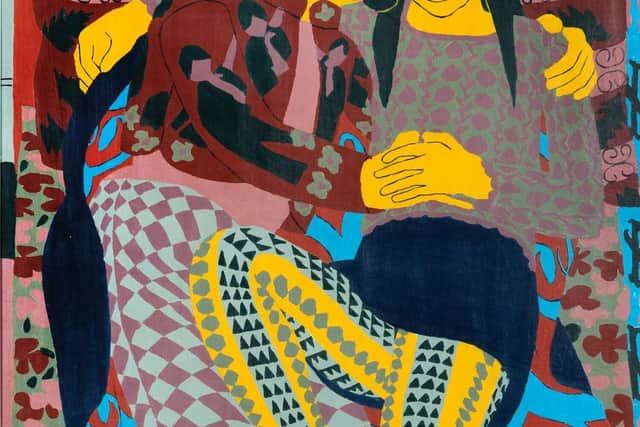

Advertisement
Hide AdWhen he went to Glasgow School of Art in 1948, he seemed already to know what he wanted to do: figurative paintings with clean lines, areas of smooth, bright colour and rich patterns. He ploughed this furrow for the next six decades while fashions waxed and waned around him, using his wife and sons, neighbours, friends and the family home as his subjects.
While the works are not dated, the groups of paintings in this show let us see the different phases he went through (each a radical change as far as he was concerned): bold outlining giving way to even bolder colours, then softening to more pastel shades. While he used flattened colour, his paintings are never flat, nor do his subjects disappear into kaleidoscopes of dense pattern; there is always depth, and we always know exactly what we’re looking at.
In time, these works will surely disperse to hold their own in private and public collections. But gathered together here, on home turf, this is a family story: four sons who grew up as their father’s models, depicted through changing fashions and teenage clinches, then with partners and children. Gilbert’s wife Pat is often painted, too, and after her death her empty chair is painted in elegy, her portrait in the background. Then, living alone in his final years, he painted interior and exterior still lifes, always on the same scale, with the same confidence and vigour.
There is a spiritual kinship between Gilbert’s stylised figures, deft lines and confident use of colour and those of Adrian Wiszniewski, whose new work is at Fire Station Creative in Dunfermline as part of the town’s Outwith Festival. It would be intriguing to see them together, particularly with Gilbert’s early work, which had a more mythical bent.
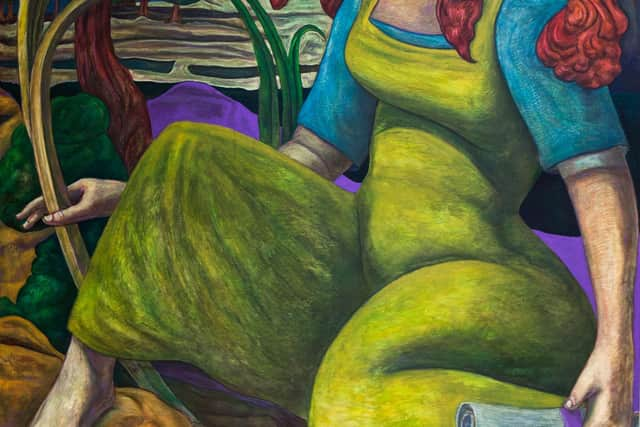

At the centre of the Wisznieski show are five large-scale paintings. Nightfall and Daybreak seem to sit in dialogue, the latter a creation myth, a woman contemplating a blue egg, a red dragon balanced on her arm and a green lizard at her side. Nightfall is a family group, a man, woman and child, with a cat and a bird, the darkness lending an “end of days” portentousness.
Creatures loom large, here, none more so than the giant octopus in Collars & Cuffs, inveigling its way between the couple, who seem to be trying to get on with everyday life, one pouring the other a glass of water. The title of the show refers to the climate emergency, and a number of the works ask questions about our relationship with nature, and with water, on which we depend, but which also threatens us with rising sea levels.
Advertisement
Hide AdWiszniewski has a polymath mind which draws freely on history, philosophy, literature, science, art (he has fun with modernism in Nude Descending Staircase (after Duchamp)) – and his work is as sweeping and symbolic as Gilbert’s is tenderly domestic. Civilisations rise and fall, here. Myths leap across time and end up in the contemporary world. Stories begin in Camelot and end in Loch Lomond.
There are big ideas, and plays on words, and sometimes both in the same painting. In this rich territory of the imagination, there is more going on than any simple decoding can do justice to. Wiszniewski continues to paint at the height of his powers, with a seemingly endless universe of ideas on which to draw.
Advertisement
Hide AdThe Burrells’ Legacy: A Great Gift to Glasgow runs until 16 April 2023; Norman Gilbert until 5 February 2023; Adrian Wiszniewski until 2 October. The Outwith Festival runs until 11 September www.outwithfestival.co.uk.